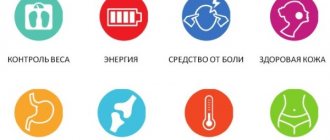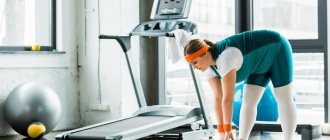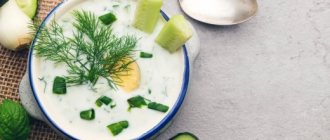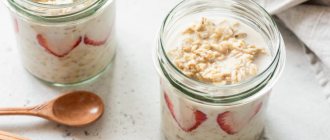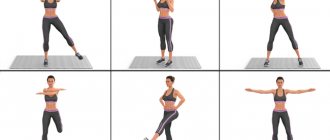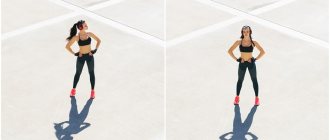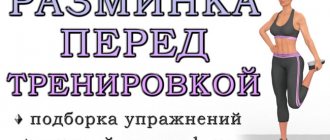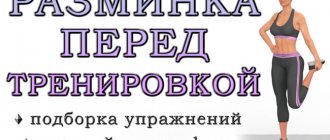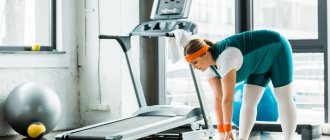Extra pounds are a universal universal pain for those who have ever thought about a healthy lifestyle, beauty, lightness, and longevity. How much effort and effort have to be spent to get rid of them. Especially ahead of the summer season. The beach dress code, without any concessions, will demonstrate who spent the winter and how. And queues line up for gym memberships, personal teachers are assigned, offering exercises, loads, indicating what to eat after a workout to lose weight, guaranteeing that when doing so, they will correct their sagging waist and normalize their plump sides.
Let's figure out how to approach the process correctly so that there is movement forward, and not marking time or, which is completely unsuitable, rolling back.
Why you shouldn't fast before training
Any physical activity requires enough energy to have the strength to achieve your goals. This energy will not come from nowhere, so eating food is not only advisable, but extremely necessary. Working out on an empty stomach, an athlete may simply not have enough strength, especially in intense training, which requires great mobility and high impact. Such fasted training can lead to loss of coordination, changes in breathing, inability to concentrate on a task, and even loss of consciousness.
Training without a long meal will be less effective, since a person will quickly feel tired, and the stomach will begin to give signals that it is already hungry, diverting the athlete’s attention from the task of training. You can only not eat before 10-minute morning exercises, since its task is only to awaken all body systems after sleep and prepare it for the working day.
Omelette with vegetables
This dish is high in protein but low in carbohydrates. If you're doing an endurance workout, you can have grapefruit, granola, mixed dried fruit, or a banana as dessert.
Ingredients
- 2 eggs;
- 2 egg whites;
- 1 bell pepper;
- 1 onion;
- 250 g mushrooms;
- 75 ml milk;
- green onions or parsley;
- ¹⁄₂ tablespoon flour.
Preparation
Cut the onion into cubes and fry until transparent. While the onions are cooking, chop the mushrooms, place them in a frying pan and fry until the moisture has evaporated from them.
Cut the bell pepper into strips. Add to the pan with the onions and mushrooms and leave covered for 1-2 minutes until the peppers become soft. Mix eggs, whites, milk, flour and green onions, pour mushrooms and peppers with this mixture. Close the lid and cook until done.
How much food should you eat before training?
The amount of food needed before training is purely individual. But it should give a person just enough energy so that he can endure the workout in good health. Of course, it should be taken into account that this food should not interfere with exercise: an excessive amount of food will put additional stress on the cardiovascular system and make it difficult to breathe at the usual rate. For example, 150–350g of oatmeal will be enough.
Authorized Products
What to eat before training, depending on its purpose, is described below.
If your goal is to lose weight:
- oatmeal (steamed), fruits, steamed buckwheat, vegetable salads without oil;
- steamed oatmeal with apple slices;
- boiled eggs;
- lean fish;
- skim cheese.
To gain muscle mass:
- turkey with pasta or rice;
- lean fish with boiled potatoes;
- from fruits: strawberry, apple, pear;
- a glass of whole milk.
Don't miss the most popular article in the section: Morning exercises for those over 40, 50. Gymnastics exercises for weight loss, video lessons.
Time to eat
The ideal diet for training in the fitness room is considered to be eating 1.5–2 hours before the start of the workout. This applies to a full breakfast, lunch or dinner, depending on what time you attend training. If, for various reasons, the time between class and the last meal is much longer, then in an hour you can refresh yourself with a glass of kefir or a small portion of cottage cheese.
If a strong feeling of hunger strikes an athlete immediately before training, then you can muffle it with an apple, orange or a piece of chocolate: do not be afraid of fast carbohydrates, they will instantly provide the necessary energy, which will quickly be used up, and the chocolate simply will not have time to be deposited in “dangerous” places.
Is it possible to eat sweets?
What an athlete should eat to lose weight and gain muscle tissue is already known, but whether it is possible to consume sweets before training, and what types to choose, is described below.
Authorized products:
- natural honey;
- dried and fresh fruits;
- marmalade;
- marshmallows and marshmallows;
- a slice of dark chocolate;
- halva;
- candied fruit;
- cane sugar.
To prevent the consumption of sweets from negatively affecting the body, it is important to follow a regime, eating sweets in small portions in the first half of the day.
What to include in your pre-workout diet and what to avoid
When choosing the right food before training, we focus on what can give energy. In terms of calorie content, this should be approximately 300-500 Kcal per 30-40 minute session. Based on numerous studies conducted on what would be most beneficial to eat before training, the following recommendations were developed:
- We create a menu, adhering to the formula “slow carbohydrates + a little protein.” Complex carbohydrates take a long time to digest, so the incoming energy is enough for the entire workout. Oatmeal, buckwheat, rice, durum wheat pasta, and wholemeal bread provide us with carbohydrates.
- To this side dish we add boiled chicken or turkey, steamed fish, lean meat (beef or veal), and an omelette.
- You can add some vegetables, fruits and berries, which will not cause frequent desires to leave the gym during training.
- Don't forget about cottage cheese or kefir.
- Before exercise, it is also useful to eat foods that contain caffeine and arginine: they dilate blood vessels, increasing blood flow to the muscles.
- Before particularly intense workouts that require increased energy consumption, it is recommended to take special pre-workout complexes from the category of sports nutrition. But due to the specificity of some components in these complexes, they can only be taken after consulting a trainer or doctor.
This diet is quite suitable as a source of energy for those who want to gain muscle mass or lose weight. Fast food, fried foods, sweet flour products, sauces and dressings based on mayonnaise require absolute exclusion, otherwise you will be guaranteed belching, nausea, heaviness and stomach pain.
Curd casserole in the microwave
WillyHaase / Flickr.com
This dish only takes 10-15 minutes to prepare. Due to the cottage cheese, the casserole contains a lot of protein, and thanks to the sugar and semolina, there are enough carbohydrates.
Ingredients
- 250 g cottage cheese;
- 3–4 tablespoons sugar;
- 2 tablespoons of semolina;
- 2 eggs;
- 1 tablespoon butter;
- ¹⁄₂ teaspoon of soda.
Preparation
Mix all the ingredients, place in a glass or plastic container, and close with a lid. Microwave for 8 minutes at 800 W.
How to stay hydrated
Drinks also need to be chosen correctly. Before training, you should exclude dairy drinks, sweet juices, any carbonated drinks (including water), and, of course, alcohol. One and a half to two hours before the start of the lesson, it is recommended to drink 500-600 ml of water (you can drink unsweetened green tea, tea with mint and basil, light unsweetened fruit drink), 250 ml after warming up and, depending on the intensity of the workout, up to 500 ml of water during classes. This is necessary to protect the body from dehydration.
In order for training in the gym to give good results without compromising your health, you should take a responsible approach not only to the set of classes, but also to the sports nutrition regimen. In fitness centers, professional instructors are always ready to give recommendations on an individual diet.
Benefits and harms
To better understand whether drinking milk after a workout is beneficial, let's look at this idea from a pros and cons perspective.
Is it possible before training?
The main benefit of milk before intense exercise in the gym is its energy value due to its carbohydrate content. A 250 ml glass contains 135 kcal and 12 g of carbohydrates (2.5% fat). This is almost 10% of the daily value!
"BEHIND"
- The product is more than 50% water, so you can drink it before strength training to prevent dehydration;
- The composition contains potassium and sodium, so it perfectly maintains electrolyte balance;
- The drink is very satisfying - it allows you to satisfy your hunger for a long time, and due to the high carbohydrate content, it gives energy, endurance, and strength. Thus, by consuming a low-calorie product, a person trains longer and more actively.
"AGAINST"
- This is a difficult product to digest. Especially if you combine it with protein;
- Lactose in its composition is the strongest allergen;
- Drinking too much can put more strain on the kidneys.
After training
"BEHIND"
- A glass of milk contains about 8g of pure protein, making it an ideal post-workout drink to close the protein window.
- The drink after training is drunk for muscle growth, because its components are actively involved in the formation of muscle fibers;
- Milk is an ideal post-workout solution for weight loss, because it is not very high in calories, but gives a high energy return. As a result, the athlete regains strength without going beyond the calorie limit;
- A glass of milk after a workout helps start the process of metabolism, regeneration, and recovery.
"AGAINST"
- If you choose a drink that is too fatty, you may gain fat rather than muscle mass. Sports trainers and nutritionists recommend drinking milk with a fat content of no more than 2.5;
- People suffering from lactose deficiency, but stoically trying to overcome it, risk developing cataracts, arthritis and cellulite. This is not to mention various disorders in the gastrointestinal tract.
But by the way, note that there are significantly fewer disadvantages than if you decided to drink coffee after a workout. The consequences of its use are much more complex and contradictory.
Separately, regardless of whether you drink the product before or after training, it is necessary to note its benefits in the following points:
- It is rich in calcium, which means it strengthens bones and joints;
- The drink also contains a lot of potassium, sodium, chlorine, magnesium, sulfur and phosphorus. Microelements include aluminum, copper, tin, fluorine, strontium, zinc, etc.
- The vitamin complex includes vitamins A, D, K, H, C, PP, group B.
- It is not at all expensive, as opposed to branded protein shakes.
- Lactose has a beneficial effect on the functioning of the heart, liver and kidneys.
To burn fat
The method of eating when you need to build muscle and get rid of subcutaneous fat is called “cutting”. Usually used before competitions.
What to eat before training to burn fat? To effectively remove subcutaneous fat and reveal muscle relief, it is necessary to change the diet, increasing the proportion of proteins and reducing the amount of carbohydrates. With such a diet, the athlete does not need to lose weight, and he cannot stop gaining weight. Protein is processed slowly, the body spends more energy on this, muscle building occurs at the expense of protein. If you have a morning workout, you should eat carbohydrates at breakfast. For example:
- Oatmeal, egg whites, vegetables;
- Fish, rice, vegetables.
When conducting classes in the evening, carbohydrates should be removed at breakfast.
